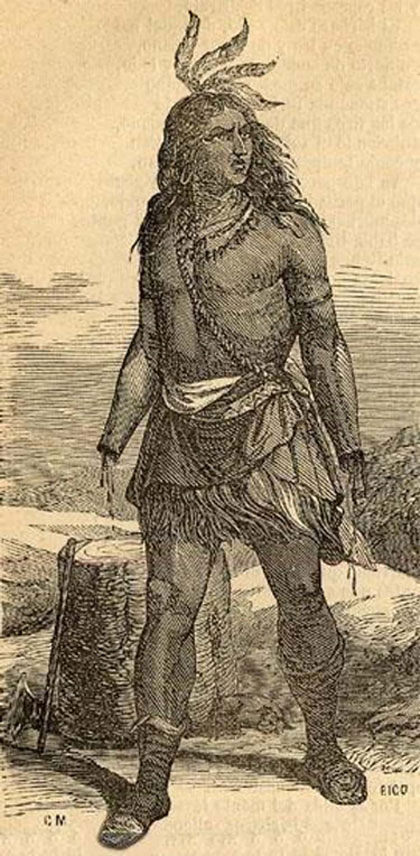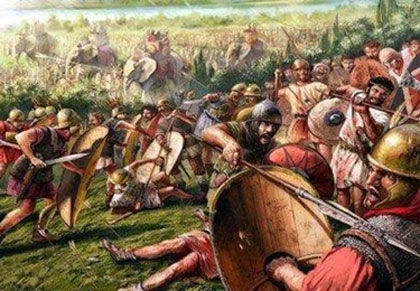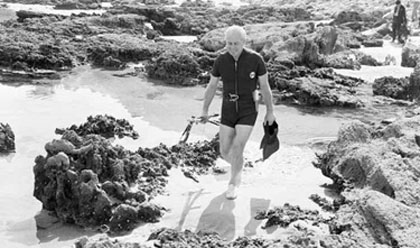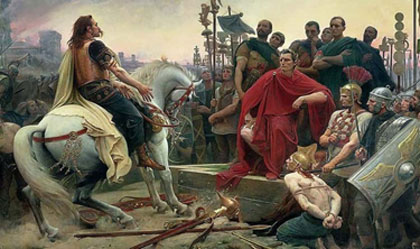
Things That Actually Happened From History That Left Us Shaking Our Heads
Katherine Walker
Hollywood has long used historical stories to generate some of their most popular content. Shows like Bridgerton and The Crown bring history to life, as do films like Judas and the Black Messiah and The Trial of the Chicago 7.
There is a reason that popular culture pulls so many movie plots and storylines from history, which provides outrageous stories that feel more like fiction than fact. Some of our most fantastic stories from history loom throughout our current culture, from Henry VIII’s scandalous marriages to the many stories of heroism in WWII. Hollywood has capitalized on those narratives to create incredible films and television shows.
But some stories from history are so astonishing or bizarre that it is difficult for even the most talented scriptwriter to make into a film. This list contains unbelievable tales from history that will leave you shaking your head and wondering what on earth our ancestors were thinking.
________________________________________
• Photo: Mithrandire / Wikimedia Commons / CC-BY-SA 3.0
 1
1
Julius Caesar Made His Pirate Captives Listen To His Original Poetry
In 75 BCE, Cilician pirates captured a Roman ship and kidnapped the twenty-five-year-old Julius Caesar while he was in route to Rhodes.
The Mediterranean had long been plagued by the atrocities of these pirates from Southern Anatolia (Cicilia), but in this case the pirates came off much worse than their noble hostage.
Rome’s future ruler annoyed and enraged his captors, and they would eventually regret not killing their egotistical charge. Caesar scoffed at their original ransom request of 20 talents, claiming he was worth 50 and charging his men to go collect the sum from his friends and family.
While Caesar waited for the ransom to arrive, he forced the pirates to listen while he performed original poetry for them, berating them as illiterate for not appreciating his rhetorical talents. Cesar regularly claimed that he would one day return and crucify them for their misdeeds against him. After thirty-eight days in captivity, Caesar’s friends payed his ransom. He later found the pirates and indeed, had them all crucified.
What do you think?
Seriously?
• • Photo: La Araucana / Wikimedia Commons / Public domain
 2
2
When The Spanish Cut Off Galvarino’s Hands, He Replaced Them With Knives
Portuguese explorer Ferdinand Magellan’s Spanish expedition arrived in Chile in 1520, and quickly declared the territory their new colony.
The indigenous Mapuche people aggressively fought the conquistadors, eventually killing their leader after he tried to expand Spanish territory deeper into the Mapuche’s land. Over the next three hundred years, Spain controlled much of South America, enslaving many of the indigenous people and forcing them to search for gold and silver. The Araucanian natives, which included the Mapuche people, continued to fight the Spanish in a long series of skirmishes, raids, and clashes known as the Arauco War.
The Spanish perpetrated many atrocities during the Arauco War, but none backfired more radically than the maiming of a young Mapuche chieftain named Galvarino In 1857 during the Battle of Lagunillas, Spanish forces under Governor Mendoza captured 150 Mapuche natives, and cut off their noses and right hands as punishment for rebelling against Spanish occupation. The Mapuche leaders, including Galvarino, had both of their hands amputated, and were then released back to their people. Mendoza presumed that his punishment would encourage the Mapuche to submit to Spanish rule, but instead Galvarino encouraged his people to continue fighting, and had knives strapped his arms before returning to battle. There are no details on how Galvarino utilized his newly acquired appendages, but his story
Seriously?
• • Photo: U.S. Navy / Wikimedia Commons / Public domain
 3
3
The USA Went To War With Guam, But No One Told Guam
During the Spanish-American War in 1898, Spain controlled the island of Guam, which lies in a critical place between the Philippines and the United States in the Pacific Ocean. In order to eventually annex the Spanish-occupied Philippines, the United States needed Guam, and planned for a one to two day siege to capture the small island.
The USS Charleston approached the island, sending up a warning flag and anticipating a reaction. When there was none, the Charleston then launched artillery at an old Spanish fort, but there was still no retaliation from the Spanish forces. Instead a small boat approached the American battleship containing envoys who were unaware the Spanish had been at war with the U.S. for over two months. The governor quickly ceded the island to the captain of the Charleston in a bloodless victory for the American forces.
Seriously?
• • Photo: Defence Images / Flickr / CC-BY-SA 2.0
 4
4
A Somali Pirate Was Arrested After Traveling To Appear In A Documentary About Pirates
Mohamed Abdi Hassan, a former Somali Pirate leader who made millions from hijacking and ransoming ships, could have remained in semi-obscure retirement, but when he heard the sound of fame calling, he could not resist.
An undercover sting operative approached Abdi Hassan, asking him to participate in a forthcoming documentary about the exploits of modern-day pirates, and the former pirate agreed. The undercover agent told him to board a plane to Brussels, but when Abdi Hassan arrived, he was immediately arrested and charged with hijacking and kidnapping by the Belgiums. Known as “Big Mouth” during his career, Abdi Hassan renounced his piracy career years earlier, but that did not preclude him from being charged for years of piracy on the high seas.
Seriously?
• • Photo: Pierre-Charles Comte / Wikimedia Commons / Public domain
 5
5
When Peter I Of Portugal Became King He Dug Up His Dead Wife
Prince Peter of Portugal, heir to King Alfonso IV, married Constance of Castile in 1336 CE, but his real love was for her cousin and lady-in-waiting, Inês de Castro. When Constance died in 1345 after giving birth to Peter’s heir, Ferdinand I, Peter and Inês officially became lovers, to the horror of his father, King Alfonso. Alfonso worried that his son would favor his lover’s Castilian relatives, unsettling the Portuguese court and even the succession. So Alfonso had Inês murdered, his hired assassins decapitating her in front of one of her children. Peter was enraged, waging battle on his father in retaliation for the murder of his lover. Alfonso was able to defeat Peter, but died soon after, making Peter King of Portugal.
When Peter ascended to the throne, he had Inês’s body disinterred, crowned her as his Queen, and according to legend, forced his courtiers to kiss her hands. The new king also had her murderers executed, removing their hearts while they were still alive.
Seriously?
• • Photo: George L. Andrews / Wikimedia Commons / Public domain
 6
6
Custer Accidentally Shot His Own Horse
George Armstrong Custer’s infamous career has been romanticized over the years, especially his poor performance at West Point prior to becoming an officer in the Union during the Civil War, and his death at the Battle of Little Bighorn in 1876. Custer’s legacy has long been debated – was he truly an inept leader at the Battle of Little Bighorn? Despite his assistance in defeating the Confederacy during the Civil War, Custer was not the perfect soldier, as a bizarre situation in his past reveals.
In 1867, Custer left his command in Kansas for a brief solo hunting expedition. The twenty-seven-year-old was eager to hunt the exotic animals in his assigned territory, and gave chase to a large male bison. Custer took aim while his horse galloped, but when the bison suddenly changed courses his horse reared, and he accidentally fired a bullet in the back of his horse’s head. Despite being thrown to the ground, Custer received no injuries, but he found himself lost on the plains in hostile territory. He managed to walk back to his post unscathed, leaving his dead horse and a piece of his dignity behind him.
Seriously?
• • Photo: Oliver Brayan / Wikimedia Commons / CC-BY-SA 4.0
 7
7
The Punic Wars Technically Lasted Over 2,000 Years
When the governments of Rome and Carthage signed a peace treaty in 1985, they ended a battle that officially began over 2,200 years earlier.
The First Punic War started in 264 BCE, when the Roman Republic sought to conquer Sicily, which was part of the Carthaginian, or Punic, Empire. That war ended in 241 BCE, but by 218, the dueling empires were at it again, this time with the Carthaginian general Hannibal at the helm. The Second Punic War ended in 201 BCE, and the third ran from 149 BCE to 146 BCE. At the end of the Third Punic War, the Romans destroyed the Carthage capital, sowing the earth with salt so that Carthage could never rise again. Yet there was never an official treaty signed between the two powers, even after Carthage’s defeat, and so the Punic War technically endured for an additional two thousands years.
Carthage is now a suburb of the capital of Tunisia, and the friendship between the two cities was cemented by the 1985 CE peace treaty, technically ending the longest running war of 2,131 years.
Seriously?
• • Photo: Mathias Appel / Wikimedia Commons / Public domain
 8
8
Australia Waged A War Against Emus
Australian veterans of WWI eagerly accepted land grants from their government, setting up farms they hoped would support their families.
But in the 1930’s, these soldiers-turned-farmers armed themselves against a new foe, the Australian emu.
In 1932 migrating emus found newly cultivated farmland in Australia to be excellent feeding grounds, destroying thousands of acres of crops planted by World War I veterans. The Australian government deployed their military to deal with the ravaging birds. What was conceived as a quick solution quickly became a full-scale war; the emu proved to be a cunning enemy. Machine gun fire did not seem to faze them, and they were able to continue wreaking havoc even after sustaining bullet wounds. In the end, the campaign was called off and instead, a bounty system became the most effective method in combating the migrating birds. Today, emus still migrate in hoards, but innovations in fencing largely keep them off farmland.
Seriously?
• • Photo: Hawaii State Archives / Wikimedia Commons / Public domain
 9
9
Hawaii’s Flag Is The Only American State Flag To Include An Insignia From A Foreign Government
When Hawaii joined the United States of America in 1959, their state flag contained a unique feature: Britain’s Union Jack. Despite being newly acquired by the US, Hawaii’s flag is a reminder of the island chain’s former relationship with Great Britain, and the history of colonization.
In 1793, British naval captain George Vancouver presented the flag to King Kamehameha I, who accepted the flag in friendship and flew it unchanged over the islands until 1816. Britain’s king then suggested they add stripes to differentiate Hawaii’s flag from the British one. The US first attempted to annex Hawaii in 1893 and briefly flew the American flag, but Hawaii declared itself a republic in 1894 and returned to their flag featuring the Union Jack. When the US finally succeeded in annexing the islands and officially granted them statehood, Hawaii continued to use their flag with the Union Jack.
Seriously?
• • Photo: National Archives of Australia / Wikimedia Commons / Public domain
 10
10
Australia’s Prime Minister Disappeared
On December 17, 1967, Australia’s Prime Minister Harold Holt, went swimming off the coast of Victoria, and vanished. The fifty nine-year-old progressive politician was a consummate outdoorsman, who regularly dove and played tennis, frequently in the company of lady companions who were not his wife. Just two days before his disappearance, Holt’s doctor told him to take it easy, especially since he was recovering from a recent shoulder surgery. Instead Holt entered the water on a particularly rough day and was never seen again.
Despite a vigorous search effort, Holt’s body was never recovered and he was declared dead. Although most people believed it was a simple accidental drowning, conspiracy theories abound that he was a Chinese spy or that he had committed suicide. A few years later, a newly renovated pool was named in his honor, the Harold Holt Memorial Swimming Centre.
Seriously?
• • Photo: Lionel Royer / Wikimedia Commons / Public domain
 11
11
Julius Caesar Built Not One, But Two Walls To Defeat His Enemies
Julius Caesar commanded numerous Roman armies during his lifetime, but his battle with the Gallic tribes made him a hero, paving the way to his eventual role of dictator. In 52 CE, Caesar led the Roman army into Gaul to siege the city of Alesia, where the leader of Gallic forces, Vercingetorix, had taken shelter with his nearly 80,000 soldiers. As the Roman forces surrounded the town, Vercingetorix sent some of his men for reinforcements in the dead of night.
When Caesar learned that some of the Gallic soldiers had escaped, and that the city had only about thirty days worth of rations for the inhabitants, he ordered his troops to construct a fortification around Alesia. He then demanded a second wall in order to keep reinforcements from attacking his army during the blockade. Eventually Caesar led his army behind the 250,000 Gallic forces who had come to rescue their comrades trapped in the city, and with this final rout, the Gallic leaders agreed to surrender to the Romans.
Seriously?
ranker.com


















